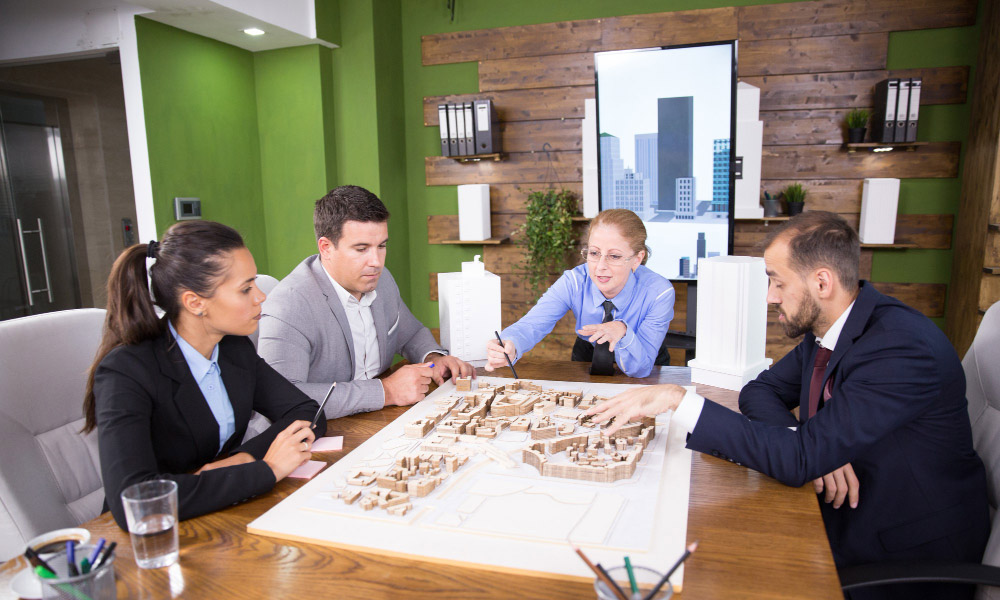Business
From Layout to Longevity: Building Spaces That Work for Everyone
Published
2 seconds agoon
By
Admin
Spaces shape how people feel, move, and work. The most successful buildings are not the most decorated or complex ones; they are those that function well, last long, and make users feel comfortable and confident. Creating spaces that work for everyone means designing with purpose, selecting durable materials, and planning for the future from the start.
Why layout is the foundation of usability
Every good building begins with a logical layout. A strong layout makes movement easy, minimizes confusion, and supports efficient maintenance. It considers the natural flow of people, light, and air. When circulation is smooth, users waste less time, and the facility operates with fewer disruptions.
Zoning plays a major role in functionality. Grouping high-traffic areas near entry points and separating them from quieter zones reduces stress and noise. Placing utilities and service areas strategically allows maintenance teams to work without interrupting daily use. Clear way-finding through consistent signage and visible sightlines helps visitors navigate without assistance.
Poor layouts create inefficiency, frustration, and unnecessary costs. Cramped corridors, confusing routes, or poorly placed fixtures lead to higher maintenance demands and wasted space. In contrast, a well-planned layout improves safety, accessibility, and user satisfaction while saving money over time.
Accessibility and inclusivity as design priorities
Designing for inclusivity ensures a space can be used by everyone, regardless of ability, age, or background. Accessibility is not only a regulatory requirement; it is a long-term investment in usability and reputation.
Features such as wide doorways, level transitions, clear signage, and tactile indicators make a building more functional. Lighting also affects accessibility, especially in public or shared facilities where users depend on visibility and orientation cues.
Inclusive design benefits everyone. Parents with strollers, older adults, and workers carrying equipment all appreciate features originally intended for accessibility. Businesses that prioritize inclusion show responsibility and earn public trust, which strengthens their long-term reputation.
Material selection and durability: building for longevity
Materials determine how well a space holds up over time. Choosing durable, low-maintenance finishes reduces long-term costs and environmental impact. Quality materials also help maintain a consistent appearance, even in areas that face heavy use.
High-traffic environments such as offices, schools, or public facilities need surfaces that resist wear, moisture, and corrosion. For example, installing stainless steel restroom partitions provides a clean, modern look while offering strength, durability, and easy maintenance. Stainless steel resists rust and vandalism, keeping restrooms looking professional for years with minimal effort.
Material selection is about practicality as much as aesthetics. Choosing the right materials from the start prevents and saves on major repairs. Surfaces should clean, resist stains, and maintain their appearance under constant use. Investing in the right materials upfront prevents frequent replacements and supports both sustainability and financial efficiency.
Balancing aesthetics and function
A functional space should also be visually appealing. Good design creates an environment people enjoy using. The key is to balance beauty with purpose. Colors, lighting, and textures influence how people feel within a space, but every visual decision should serve usability.
Timeless aesthetics age better than trendy designs. Neutral tones, durable finishes, and natural materials offer longevity. Lighting should highlight pathways and work areas without glare. Texture adds depth, but should remain easy to clean and maintain. Hiring the right painting company is crucial to ensuring your paint job is perfect.
When design and function align, the space feels intuitive. People move naturally and feel at ease. The best-designed facilities are often the ones users notice the least because everything works as expected.
Maintenance efficiency and operational transparency
Maintenance is the backbone of long-term performance. Even the best materials will fail if not cared for properly. Designing for easy maintenance extends the life of both surfaces and systems.
Smooth, nonporous materials, modular fixtures, and proper ventilation reduce cleaning time, limit bacterial growth, and prevent mold. Equipment rooms need easy access and clear service space.
Operational transparency also builds trust. When users see visible cleaning schedules, organized waste management, and quick repairs, they gain confidence in the facility’s reliability. A clean, well-maintained environment communicates professionalism and care.
Sustainability and resource efficiency
Sustainability and durability are closely linked. A sustainable building utilizes resources efficiently, operates reliably, and incurs lower operating costs over time. The design process should prioritize energy efficiency, waste reduction, and material longevity.
Natural lighting reduces dependence on artificial light. Water-saving fixtures lower utility costs and support environmental goals. Recyclable and low-emission materials improve air quality and reduce waste.
For practical guidance, businesses can explore approaches to sustainable building that combine performance with cost efficiency. Integrating these methods early in the planning phase ensures every part of the project contributes to long-term value. Sustainable design is not only about protecting the environment; it also enhances durability, reduces maintenance, and keeps spaces functional for a longer period.
Flexibility and adaptability for future needs
Every building changes over time. Teams expand, new technologies emerge, and usage patterns shift. Designing with flexibility allows spaces to adapt without expensive renovations.
Modular walls, movable partitions, and scalable systems make it easier to reconfigure layouts. Flexible electrical and plumbing systems support future upgrades. Storage areas and service spaces should be adaptable to different functions as needs evolve.
Flexibility also contributes to sustainability. Reusable components and adaptable layouts prevent waste and extend the building’s usable life. When spaces evolve smoothly, organizations avoid costly downtime and maintain continuity.
Final thoughts
Designing for longevity prioritizes function, durability, and adaptability over immediate appearance. Inclusive designs balance layout, comfort, and care, simplifying tasks, reducing maintenance, and conveying trust through quality. A well-designed space supports people, operations, and the environment long-term, where form and function ensure longevity.

From Layout to Longevity: Building Spaces That Work for Everyone

Scaling Without Chaos: Strategies for Growing Teams

How to Choose the Right Book Writing Services for Your Genre

Top 5 Fastest Growing Majors in USA – Experts Guide

Meet Karima Jackson: Ice Cube’s Smart and Private Daughter

What to Know About Kim Marie Kessler: Randy Orton’s Wife and Fashion Boss

Turning Playtime into Paytime – My Money Cash Experience

Alice Adair, Josh Brolin’s Ex-Wife, and Her Life After Divorce

Dubai Yachting and Boating: The Complete Lifestyle Guide

Elevate Your Writing Game with Trinka’s Grammar Checker: The Ultimate Tool for Flawless Content

Curious About JOI Database? Read This First Before You Click Anything

Jacqueline Bernice Mitchell: The Inspiring Story of Jerry Rice’s Ex-Wife

Should You Use Wooflix in 2025? Honest Review and Best Alternatives

Where Is Noelle Watters Now? Jesse Watters’ Ex-Wife’s Life After Divorce

Who Is Marlene Knaus? The Untold Story of Niki Lauda’s First Wife

ECMISS: The Intelligent System Behind Smarter Everything

Alisande Ullman Today: What Happened After Her Divorce from Leslie Nielsen?

Where Is Tanya Hijazi Now?: All About Rick James’ Former Wife

What Happened to Frances Cain After Her Split from Jeremy Clarkson?

Where Is Anne Steves Now? The Truth About Rick Steves’ Ex-Wife

From Layout to Longevity: Building Spaces That Work for Everyone

Scaling Without Chaos: Strategies for Growing Teams

How to Choose the Right Book Writing Services for Your Genre

Top 5 Fastest Growing Majors in USA – Experts Guide

Meet Karima Jackson: Ice Cube’s Smart and Private Daughter

What to Know About Kim Marie Kessler: Randy Orton’s Wife and Fashion Boss

Turning Playtime into Paytime – My Money Cash Experience

Alice Adair, Josh Brolin’s Ex-Wife, and Her Life After Divorce

Dubai Yachting and Boating: The Complete Lifestyle Guide

Elevate Your Writing Game with Trinka’s Grammar Checker: The Ultimate Tool for Flawless Content
Categories
Trending
-

 Entertainment4 months ago
Entertainment4 months agoCurious About JOI Database? Read This First Before You Click Anything
-

 Celebrity2 months ago
Celebrity2 months agoJacqueline Bernice Mitchell: The Inspiring Story of Jerry Rice’s Ex-Wife
-

 Entertainment4 months ago
Entertainment4 months agoShould You Use Wooflix in 2025? Honest Review and Best Alternatives
-

 Celebrity3 months ago
Celebrity3 months agoWhere Is Noelle Watters Now? Jesse Watters’ Ex-Wife’s Life After Divorce
